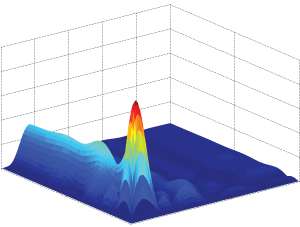Searching for quantum physics in all the right places

An improved method for measuring quantum properties offers new insight into the unique characteristics of quantum systems.
The properties of quantum physical systems are fundamentally different to those of classical systems in a way that makes them attractive for applications such as computing and communications. However, it is often difficult to determine whether a system is in a quantum or classical physical state. Franco Nori and colleagues from the RIKEN Center for Emergent Matter Science, together with collaborators in Taiwan, have now developed a mechanism that permits the reliable detection of quantum properties—even in complex systems1.
The unique behavior of quantum states arises from the superposition of different states—a property known as quantum coherence. The physicist Erwin Schrödinger famously compared the concept of quantum coherence to a theoretical experiment in which a cat is sealed in a box with a vial of poison to be released by a random quantum mechanism. Without looking inside the box, it cannot be known whether the cat is dead or alive; the cat is therefore in a quantum coherent state. While some quantum states are used for computing, they also occur in nature—in certain biomolecules, for example.
Measuring the properties of quantum systems is important to further their technological utility. Unfortunately, existing measurement methods are impractical due to their complexity and the constraints they place on the quantum states that can be detected.
"Our main goal was to devise an unambiguous test that is easy and practical to implement, and which relies on as little 'foreknowledge' of the system as possible, to determine its quantum properties," explains Neill Lambert, a member of the research team.
The detection scheme developed by Nori, Lambert and colleagues involves the introduction of two 'quantum witnesses' that allow the comparison of two runs of an experiment: one in which the state of a system is observed twice, and one where it is only observed once. This procedure effectively sums the results of multiple random experiments to test whether there is any deviation from the expected classical values, which would provide evidence for a quantum state (Fig. 1). For Schrödinger's cat, such a deviation would suggest that the cat is neither dead nor alive but is instead in a quantum combination of both states.
Among the many possible quantum systems to which this method could be applied, experiments involving biological molecules are particularly interesting, says Nori. "The question of whether quantum coherence exists in biological organisms, for example in a photosynthetic complex, has triggered a surge of interest into the relationship between quantum coherence and biological function."
More information: Scientific Reports 2, 885 (2012). DOI 10.1038/srep00885
Journal information: Scientific Reports
Provided by RIKEN

















